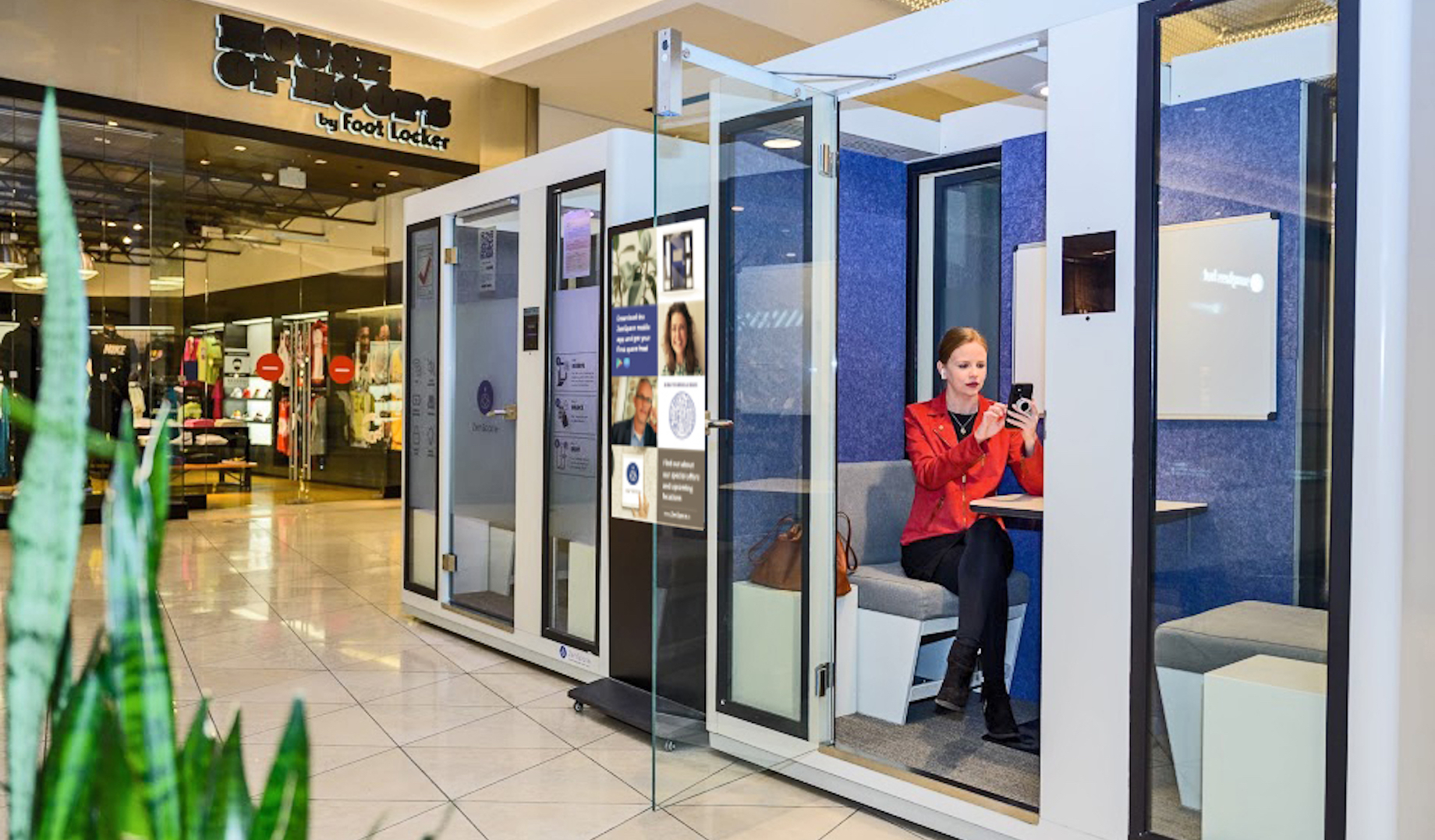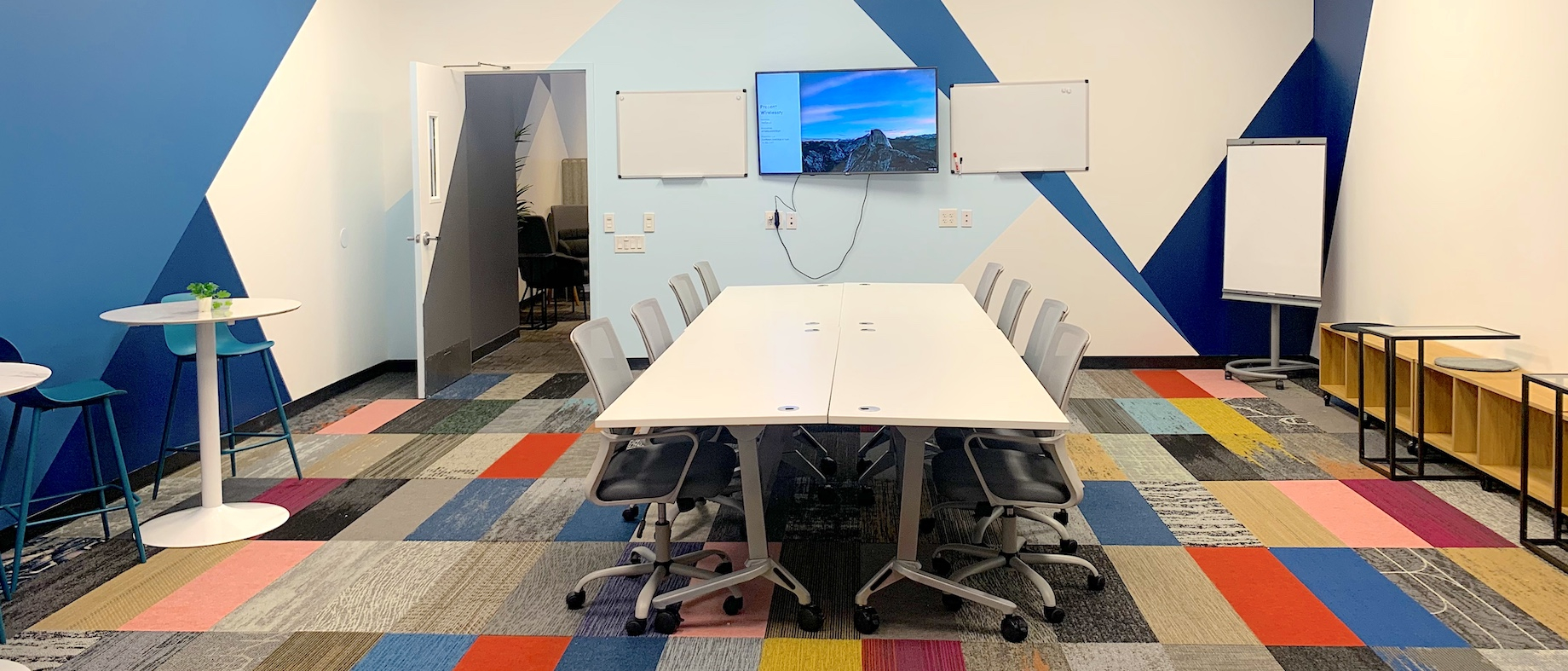Co-working companies expect hybrid workplaces to stay and thus are targeting suburban lifestyle centers, conventional open-air shopping centers and malls as alternative office work settings. The idea is to leverage these centers’ restaurant, shopping, entertainment and service amenities to attract office users. As companies and employees reassess where and how work gets done, co-working operators consider the suburbs the next wave of growth.
Co-working 1.0 focused on downtowns and urban areas, and co-working 2.0 is following workers who’ve moved from urban areas to the suburbs during COVID-19. Lockehouse director of advisory services and COO Garrick Brown said San Francisco, for example, lost roughly 100,000 people in 2020. While some moved to the Sun Belt, the vast majority moved to suburban communities surrounding the cities they left, he said. “People were fleeing the most expensive and densest cities for the suburbs,” said Brown, a veteran real estate analyst who recently joined Lockehouse, “so the co-working opportunity is suddenly aligning with malls and shopping centers in the suburbs. Not only did people get used to working from home and remaining productive for 18 months, but they also got used to 18 months of not having a long commute.”
Rebounding demand
The growing emphasis on suburbs coincides with a rebound in demand for flexible space. While 21% of co-working locations closed in the 12 months after the virus ushered in remote working, demand for such space grew 41% from the first quarter of 2021 to the second quarter, according to Upsuite, a marketplace that connects co-working operators and users.
Daybase, a startup launched by former WeWork executives a year ago, plans to roll out its 5,000-square-foot flexible working format in ground-floor space in shopping centers, retail corridors and apartment projects in high-traffic, non-central business district residential neighborhoods. Co-founder and CEO Doug Chambers described Daybase’s membership-based product as a cross between a boutique fitness operation and Starbucks: a place where people can spend a couple days a week or hours a day when not in the main office but bored at home.
“We are seeing people putting their foot down and saying, ‘I don’t need to come in five days a week, eight hours or more a day to be productive, and in fact, I can be potentially more productive and happier if I don’t,’” said Chambers, whose firm will open company-owned locations soon and will offer franchises next year. “Flexible working 2.0 is related to people having a different set of behaviors than they did two years ago.”
Co-working operators actually gravitated to retail centers well before COVID-19. From 2011 to the second quarter of 2019, the amount of co-working space in malls had climbed 217%, to 378,431 square feet. In non-mall retail space, it had increased 41% to 392,664 square feet, according to ICSC research released in October 2019.
In 2015, for example, co-working operation Bespoke launched at Westfield San Francisco Centre. ZenSpace — which operates co-working lounges, conference rooms and private pods to place in common areas — has secured partnerships with owners of thousands of retail and commercial properties in the U.S. and Europe. In the past few months, it has brought all three of its products to Westfield Oakridge in San Jose, California, and pods and a conference room to Westfield Valley Fair in nearby Santa Clara.

A ZenSpace co-working pod in a common area in Westfield Valley Fair

A ZenSpace co-working conference room in Westfield Oakridge. A ZenSpace co-working lounge at Oakridge is pictured at top.
In 2019, Industrious opened co-working space in Macerich’s Scottsdale Fashion Square in Arizona. Meanwhile, HBC and WeWork have partnered to convert some or all of current and former Saks Fifth Avenue and Lord & Taylor department stores into flexible working space as part of a venture known as SaksWorks.
“Our centers in Silicon Valley and San Francisco are leveraging inline space with co-working industry leaders ZenSpace, and we created Bespoke to offer multiple options for hybrid work that further define the shopping center experience in this new era,” said Unibail-Rodamco-Westfield executive vice president of U.S. leasing Colin Shaughnessy. “Each generates foot traffic, attracts potential retail customers, utilizes inline space and overall enhances the destination experience, going above and beyond what is expected of a retail center.”
SBLM Architects vice president James Cohen agrees that activating common areas and creating niches that provide co-working users with comfortable spaces can foster success for a retail or mixed-use property. “You don’t want people to stay within their four walls; you want them to be part of the community,” he said. “It’s a live-work type of setting; you’ve got people there potentially eight hours a day that are going to eat, take a break and go shopping.”
The retail or mixed-use environment needs to be right for the symbiotic benefit to work. A traditional enclosed mall in need of upgrades like adding outdoor shopping, cafes and dining, might not be the right fit for co-working operators, according to Chambers. “Going to the mall once a month or once a quarter is one thing, but we’re looking for places that are much more inviting from a daily-user perspective.”
Built-in experiential amenities
Co-working operators are focused on the experiences not just in the environments that surround them but within their spaces, too. Flexible space platform Launch Workplaces routinely hosts conferences, art nights, open houses, happy hours, professional development seminars and other events, said CEO Mike Kriel. Launch Workplaces grew out of a 128-year-old family business that owned nearly 1 million square feet of office in the Washington, D.C., suburbs. To compete, the company began offering co-working space in 2014, and four years later, other landlords asked for its help to do the same.
With its suburban experience, Launch Workplaces plans to open locations in and around lifestyle centers, Kriel said. This year, the firm has opened spaces in two suburban Cleveland mixed-use lifestyle centers owned by Stark Enterprises: one within an office tower in Eton Chagrin Boulevard and one above retail space in Crocker Park, a mixed-use town center. “We were focused on the suburban market and came to find that what makes a good co-working location is the type of amenities you find at a lifestyle center,” Kriel said. “Our strategy is going to be to thrive in suburban markets. Lifestyle centers in our markets are absolutely on fire compared to urban markets.”
By Joe Gose
Contributor, Commerce + Communities Today